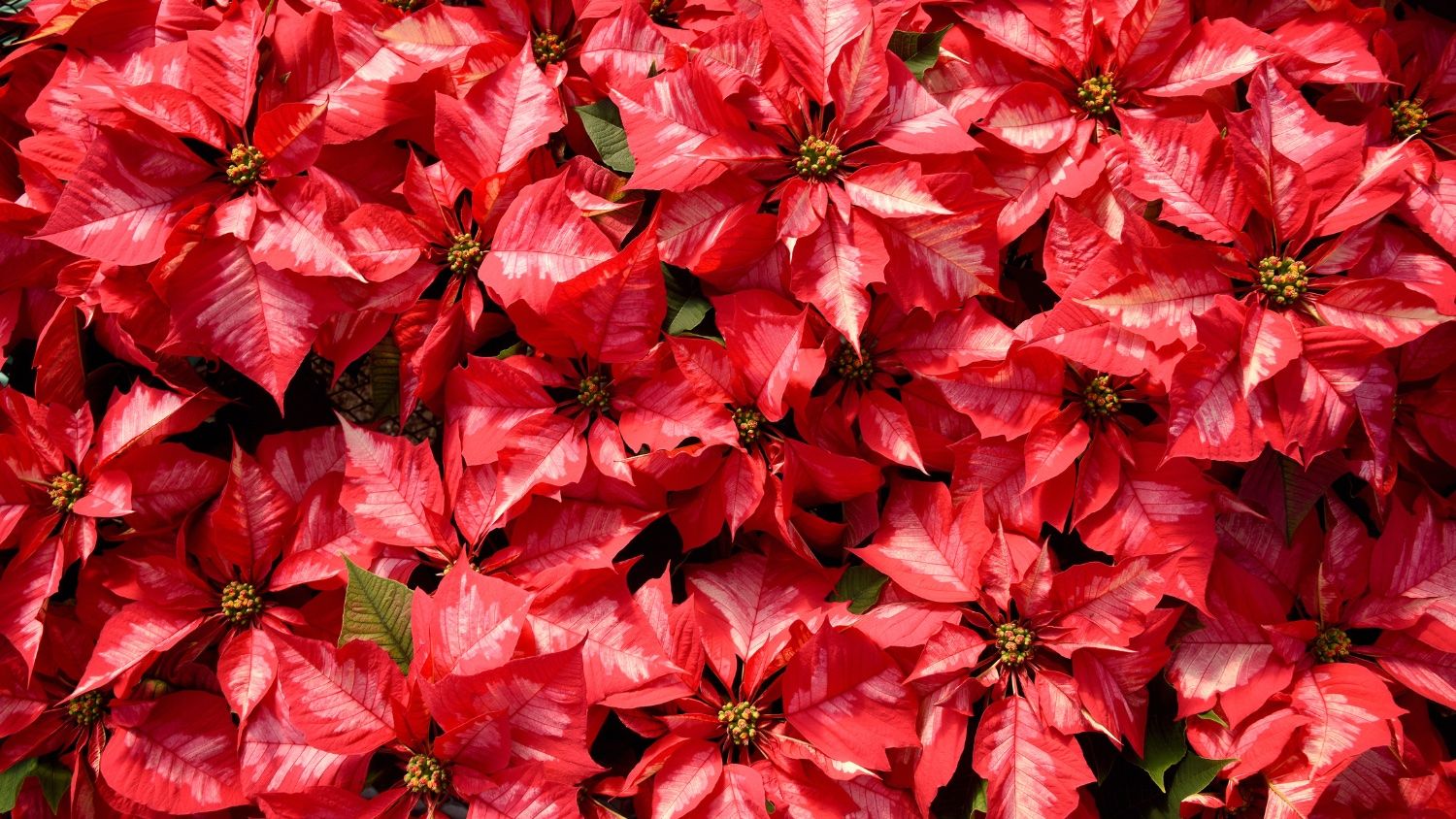Quick and Tasty Edibles for Spring
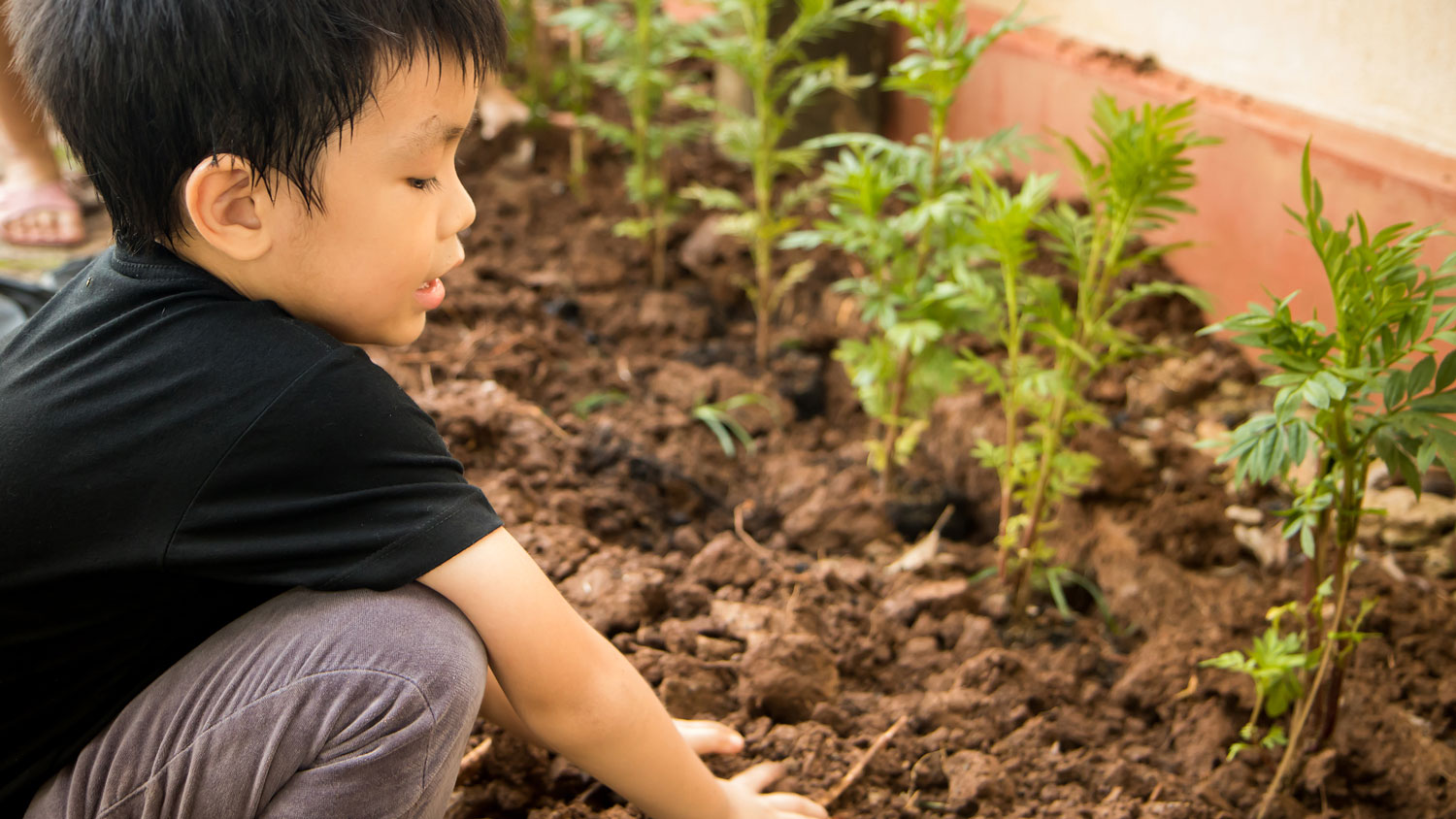
By Liz Driscoll
NC State Extension 4-H specialist
Ready, set, grow! There are a lot of veggies that families can grow within two months; start by sowing these seeds directly into the earth and, in a blink of an eye, they are ready for a delicious harvest.
Seeds are an inexpensive way to start a garden, and you can find them from multiple sources. Browse and order through online seed companies, check with your local nursery to see if they allow call-in orders and outside pick-up or consider local seed exchanges within your community.
Greens, greens, greens!
Any veggie with an edible leaf is a sure bet for fast flavor. Most greens are grown in the cooler weather of spring and bring a bright and tasty flavor to any dish.
Lettuce — Most kids will want to nibble like a bunny on the fresh, tender leaves of lettuce. Grow “leaf lettuces” (rather than a heading-type like iceberg) by lightly broadcasting seeds on the surface of the soil in a small patch. Leaves can be harvested as soon as four weeks. Some leaf lettuces are cut-and-come-again types, meaning as you harvest, leaves will regrow from the base of the plant for another harvest.
Spinach — Rich in iron, the dark green, wrinkled leaves of spinach are super-packed with nutrition and flavor. Sow seeds ½ inch deep and 2 to 4 inches apart if planting as leaf spinach or 6 inches if growing as a spinach head. Spinach leaves can be ready for harvest in as little as 30 days.

Arugula — Spicy and zesty, arugula offers a very different flavor than milder greens. It makes some kids want to dance, and, for others, it might take many tries before any toe-tapping occurs. Plant seeds ¼ inch deep and space 2 to 4 inches apart. Leaves can be harvested in as little as 20 to 40 days.
Kale — There is nothing finer than fresh kale from the garden. Directly sow seeds into the garden with a depth of ½ inch and space 6 inches apart. When ready to harvest in 40 to 50 days, put a few leaves in a baggie, add a squeeze of fresh lemon juice and a dash of olive oil. Massage your kale and add sunflower seeds, a bit of cheese, and anything else and you have a salad on the go.
Bok Choy — Bok choy offers scrumptious flavor for any young friend. Sow seeds shallowly, ¼ inch and space about 10 to 12 inches apart. In about 50 to 60 days, bok choy can be harvested. With the edible leaves and stems, kids can make bok choy “sticks” or help stir-fry it for dinner.
Rooting Around
Digging into earth to find an edible treasure is sure to delight children of all ages. These roots are quick to grow and harvest as well as satisfyingly savory.
Baby Carrots — Munch, munch and crunch! Baby carrots are just the right size for your favorite pint-sized snacker. Sow seeds directly into soil that is deep, loose and well-drained. Plant 2 to 3 weeks before last frost, ½ inch deep, ½ inch apart, in rows 12 to 24 inches apart. Carrots are slow to germinate (one to three weeks) and will need to be thinned. Thinning carrots is the process of removing carrot seedlings to reduce competition from neighboring plants. Thin carrots by cutting seedlings with scissors to 1- to 4-inch spacings before seedlings are 2 inches tall.
Radishes — Radishes can be spicy for young palettes, but a few cultivars are milder than others, including Peter Rabbit’s favorite radish, ‘French Breakfast.’ Try ‘Watermelon’ radish for a cool surprise when you cut into the radish or ‘Easter Egg’ for a bounty of rainbow colors. Plant seeds ½ inch deep and an inch apart. Radishes are ready to eat in only 25 to 30 days! A mere month to zesty goodness.
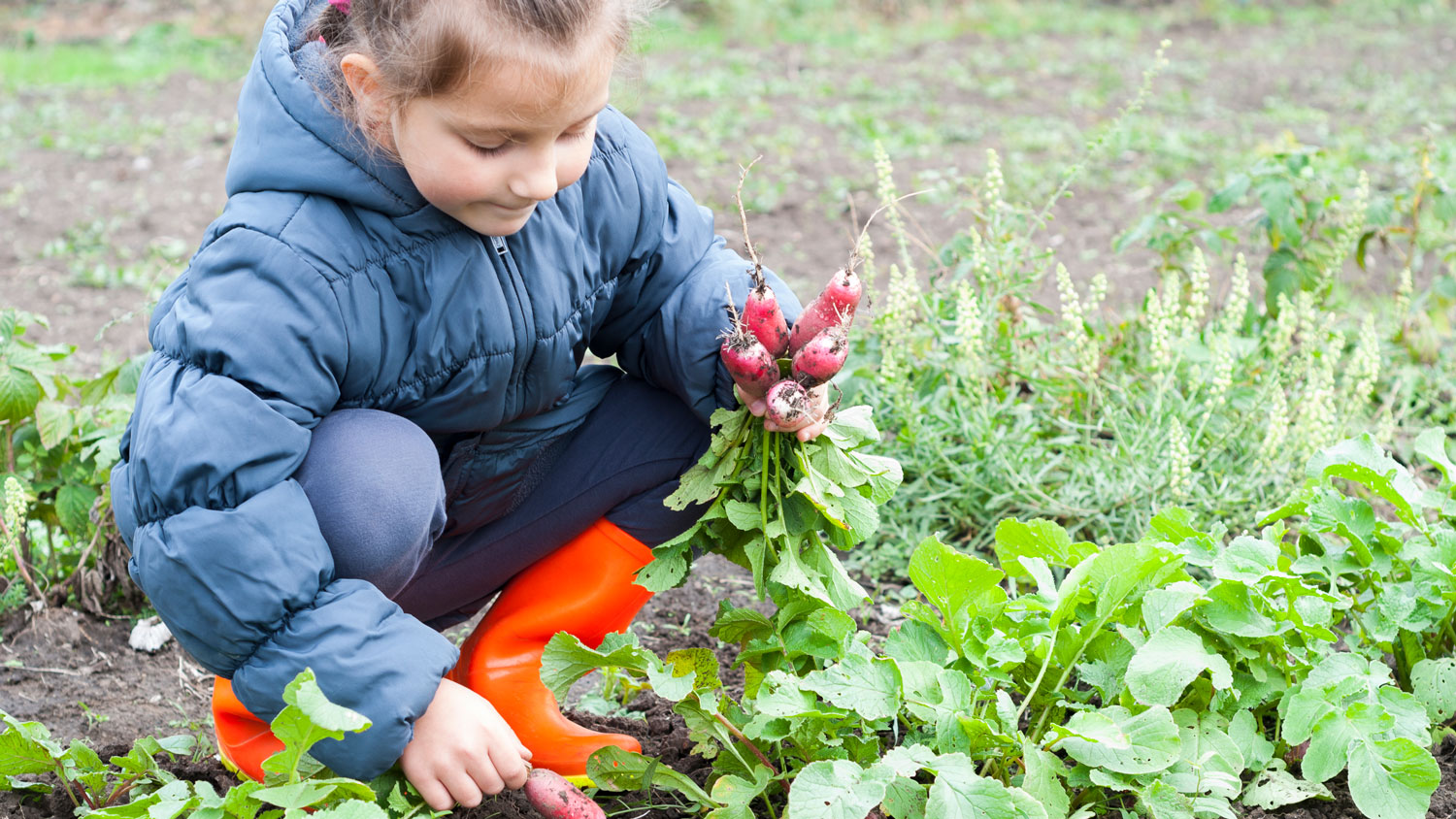
Turnips — Kin to radishes, baby turnips are mild and wonderful. Plant seeds ½ inch deep, 2 inches spaced, and then pull some out of the ground in as little as 45 days. Try ‘Hakurei’ for a gentle turnip introduction for picky eaters. Kids can chow down on both the leaves and roots.
Baby beets and greens — Eat the tops and bottoms of these earthy delights! Beets can be red, yellow and orange and are full of nutrients perfect for any growing child. Plant beet seeds in the spring about a ½ inch deep and spaced 2 inches apart. Harvest in 50 to 60 days, and if the raw taste is too strong, try making them into beet burgers!
Fruits of your Labor
Cultivating veggies when the part you eat is the botanical fruit can take awhile —
but there are a few that yield a harvest in a blink of an eye. Try these veggies to make diverse and delectable dishes.
Cukes — Cucumbers are a crunchy favorite! Harvest in as little 50 days, as soon as a fruit is big enough to eat. Sow cucumber seeds directly in the soil about 1 inch deep and 10 inches apart. As a bonus, try growing a cucumber in a bottle by tucking a baby cuke into the bottle when it is small and letting it grow inside the bottle. When it is big, harvest it and show it off to your friends. They will be amazed!
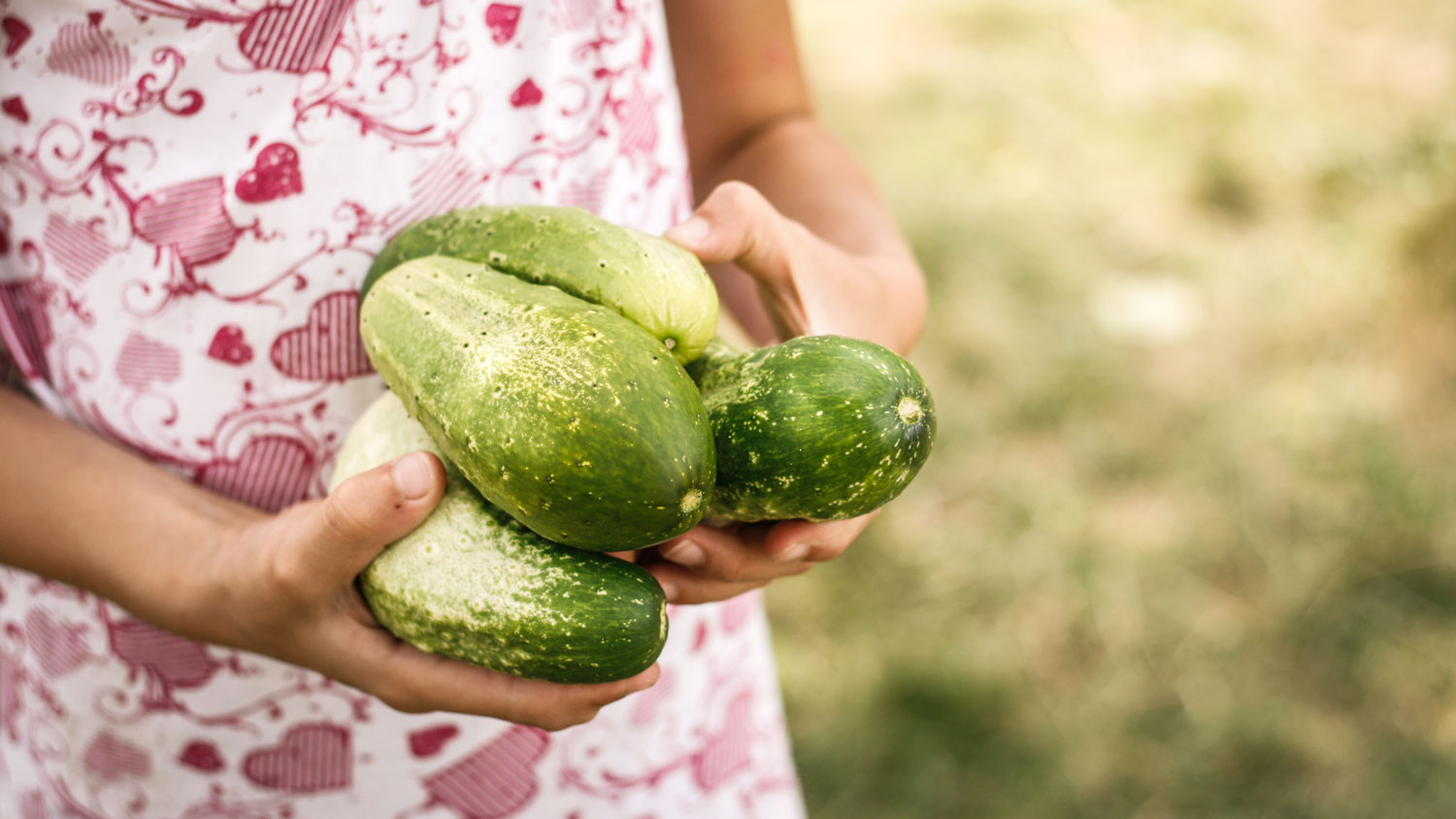
Squash — Grow summer squash or zucchini, and as soon as the plant has a fruit that is harvestable — that takes about 50 to 60 days — pull it from a vine. More fruits will soon appear. Sow seeds 1½ inches deep and 24 inches apart. Grate them raw into a salad or saute slices in garlic and butter.
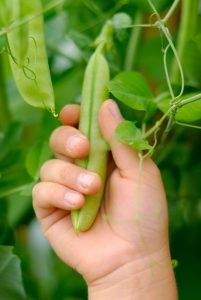
Peas — This hardy and tasty veggie can be grown in the early spring when temperatures are still chilly. Snow peas or snap peas are the best pulled from the vine and popped right into the mouth! Sow seeds 1 inch deep and space 1 inch apart. They take about 60-70 days to harvest. Be sure to support them with a trellis or pole for them to climb up. Dip them in hummus or ranch for a healthy garden snack.
Snap beans — Just as the name suggests, these beans are a snap to grow and make a loud SNAP when you bite into them. Tuck them into the soil 1 inch deep and space 3 inches apart. Whisper encouragement to them to grow fast and ready for a harvest in 50-55 days. Merrily munch away!
Okra — a celebrated southern summer vegetable, sow the large round okra seeds directly into 1 inch in the ground anytime after mid-April and 12 inches apart. Harvest baby okra in as little as 60 days and eat them raw right off the plant or roast them for rich flavor.
Get your kids in on making decisions on what to plant and when with these planting wheels and planting guides made just for them!
- Categories:
